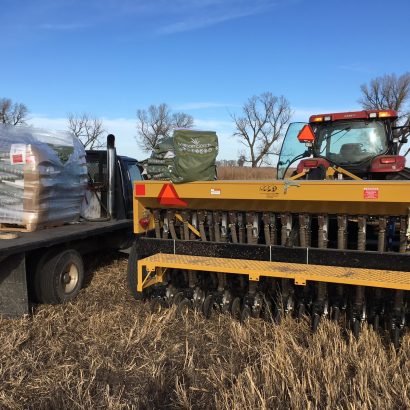Switchgrass is an excellent option when improving habitat on your property. This tall, warm season native provides excellent bedding cover for whitetails, and makes great upland bird habitat as well. Switchgrass is used due to its ease of establishment, height, and excellent standability in the winter months.
How to plant switchgrass
Switchgrass can be broadcasted or drilled in the spring, planted in the fall, or frost-seeded in the winter months. For drilling, we recommend 6-8lbs/acre and 8-10lbs/acre during a broadcast seeding. Be sure you’re planting it 1/4inch deep on a firm, clean seedbed.
A guide to switchgrass varieties
Cave in Rock is a great variety when establishing wildlife cover and it’s been a staple across the Midwest for years. This is an improved variety chosen to establish quickly and provide more height than other common switchgrass varieties.
RC Big Rock is an improved switchgrass variety, specifically chosen for wildlife habitat. It’s the tallest switchgrass we offer, growing seven to nine feet tall when fully established. It’s commonly used for deer bedding, access screening, and upland bird habitat. RC Big Rock is quick establishing and provides great cover for wildlife.
RC Tecumseh is an earlier maturing variety that does well in dry and sandy soils. This variety also offers great winter hardiness.
Blackwell switchgrass is adapted to grow well in the south-central and eastern states. Compared to other switchgrass cultivars, Blackwell has high leafiness, great forage, and good disease resistance.
Dacotah was adapted to grow in North Dakota, northern Minnesota, and South Dakota. It grows shorter with thinner leaves and stems, and matures earlier when compared to other switchgrass cultivars.
Forestburg was adapted primarily for North Dakota, South Dakota, Minnesota, and Iowa regions. Forestburg is tolerant to drought, saline, and alkaline soils.
Sunburst is similar to Forestburg in performance and adaptions. Compared to Dacotah, Sunburst is late maturing, and both are suitable for haying and grazing in Minnesota and South Dakota.
Nebraska 28 switchgrass was adapted in Nebraska and performs well in sandy, well-drained soils throughout the upper Midwest.
Get in touch
Not sure what switchgrass variety is right for your projects? Contact one of our Conservation, Commercial, and Reclamation Sales Account Managers to create a custom plan for your project.




Discussion
0 Comments